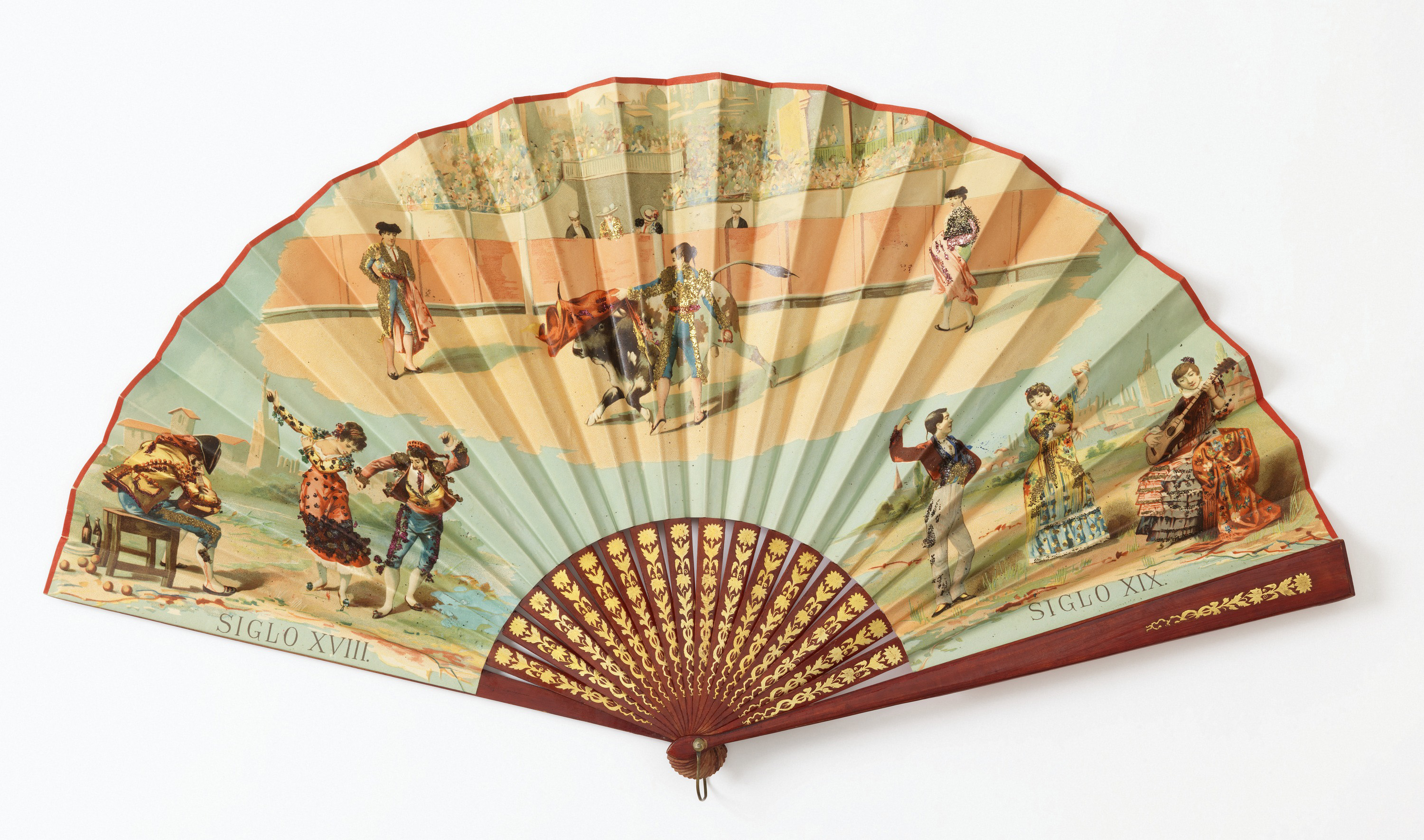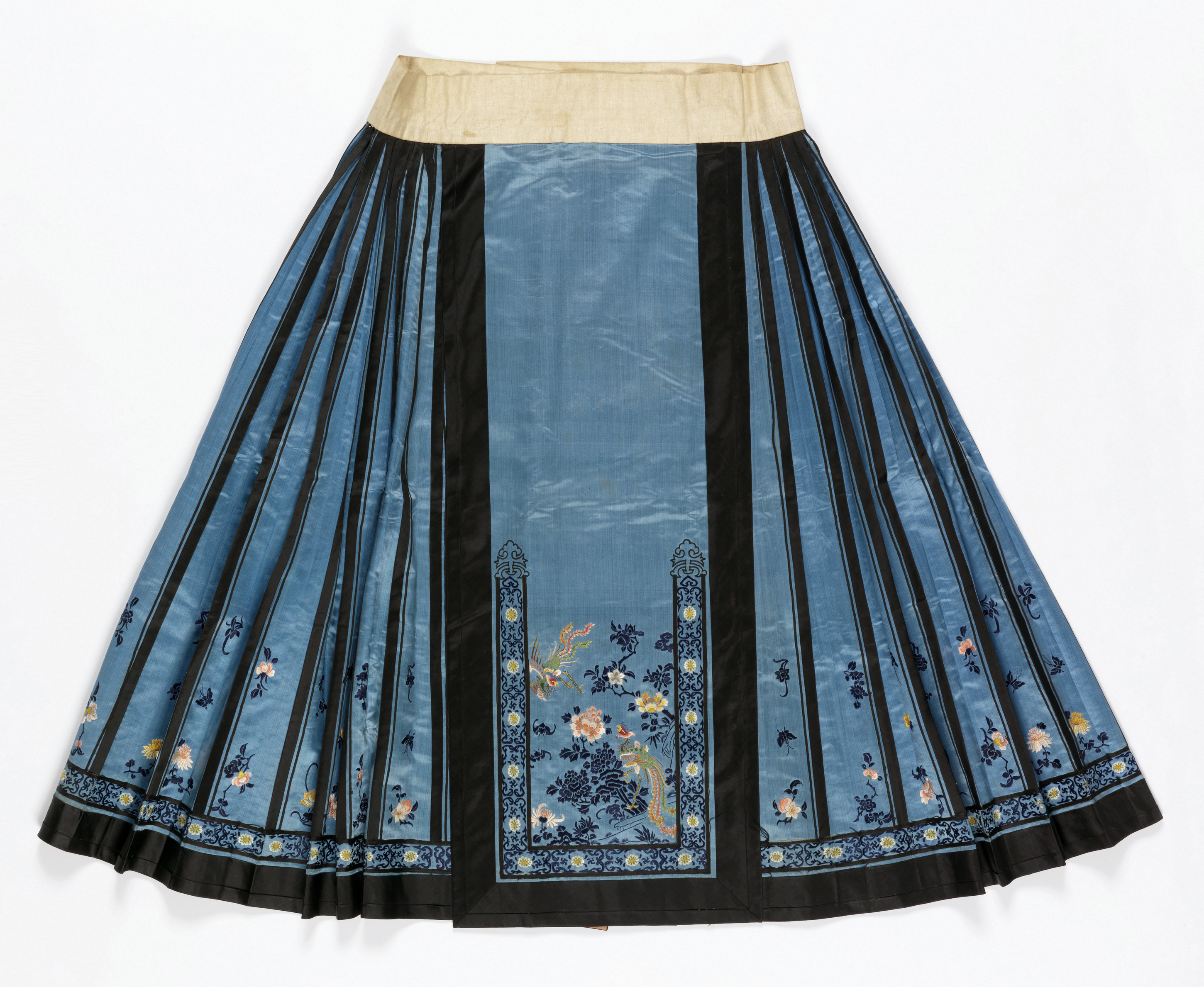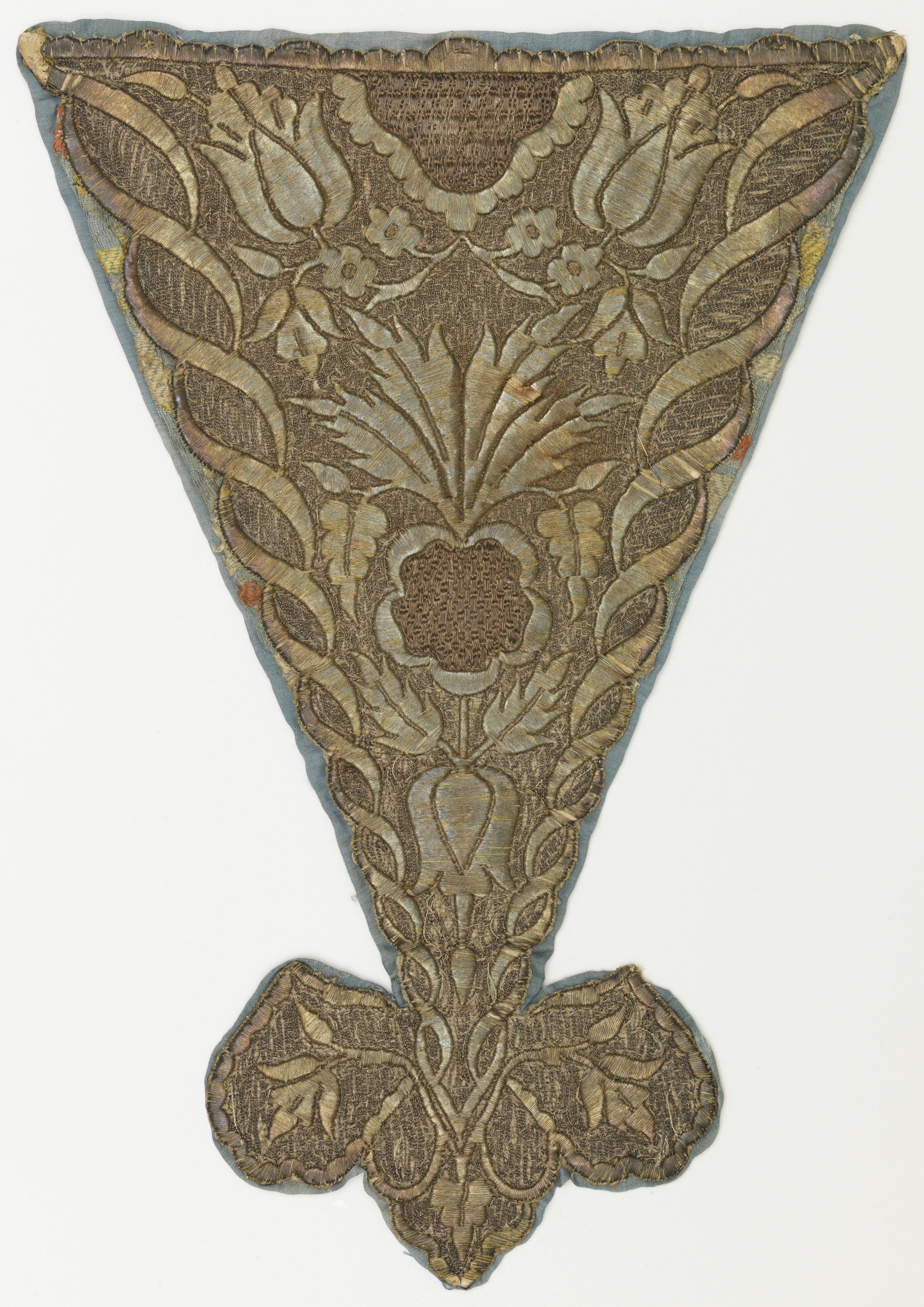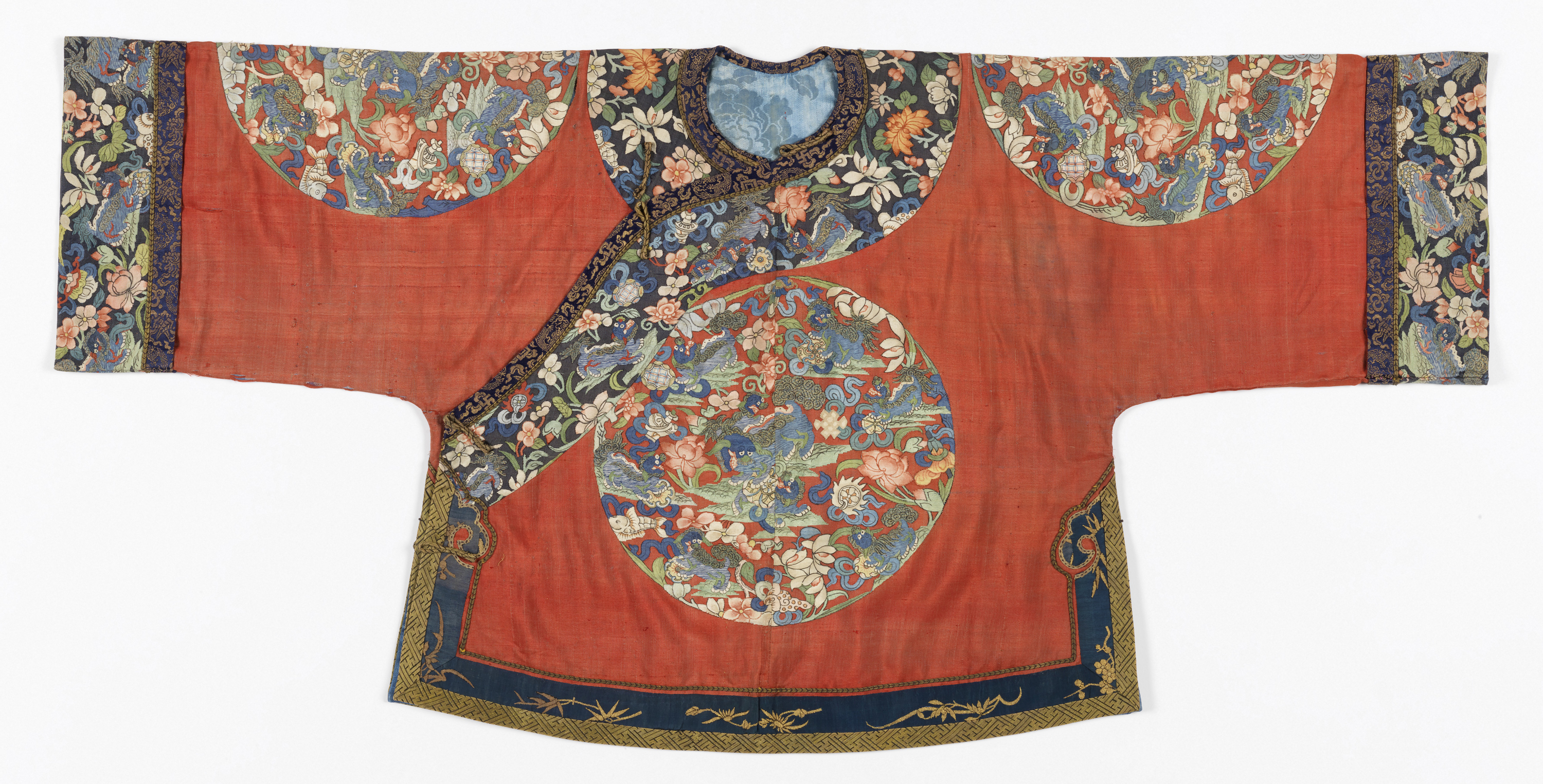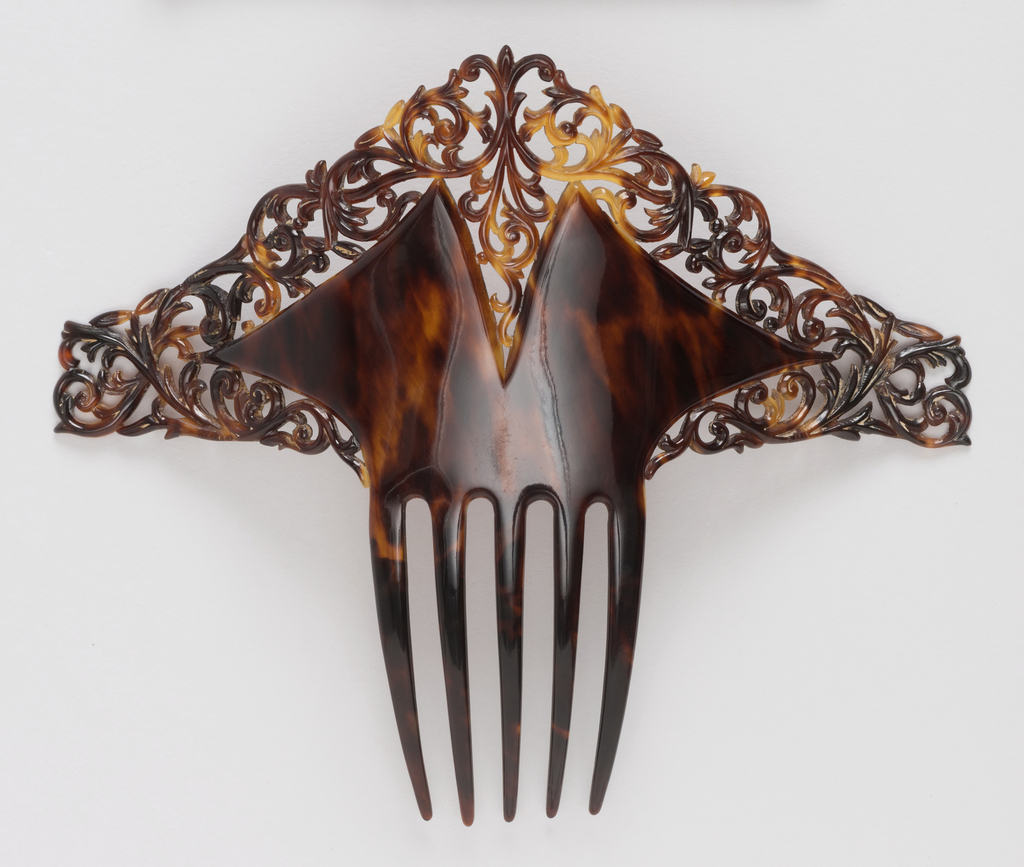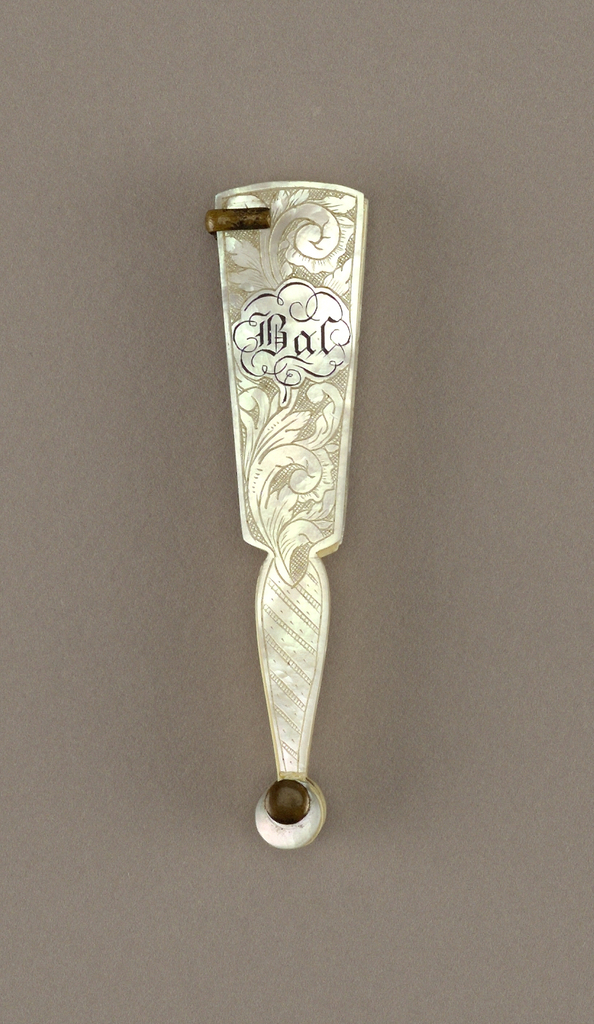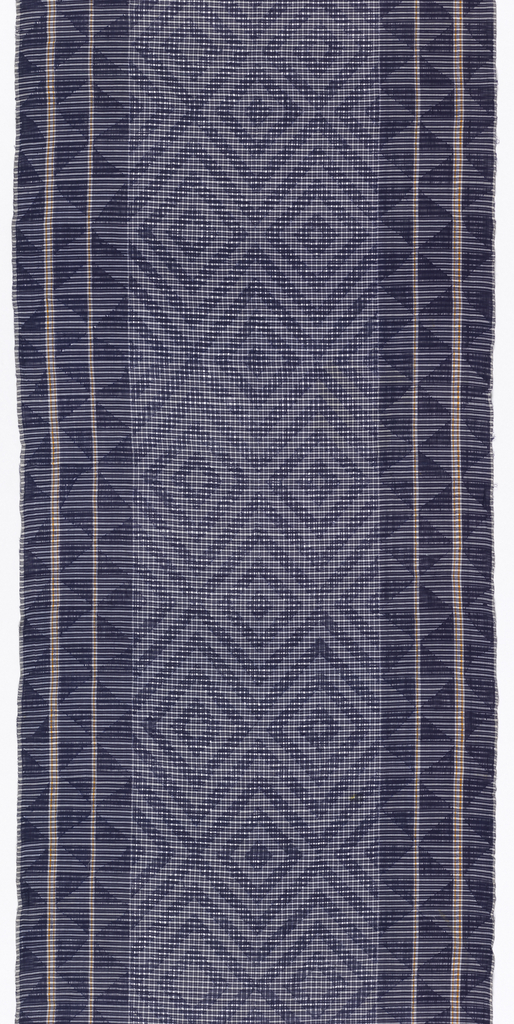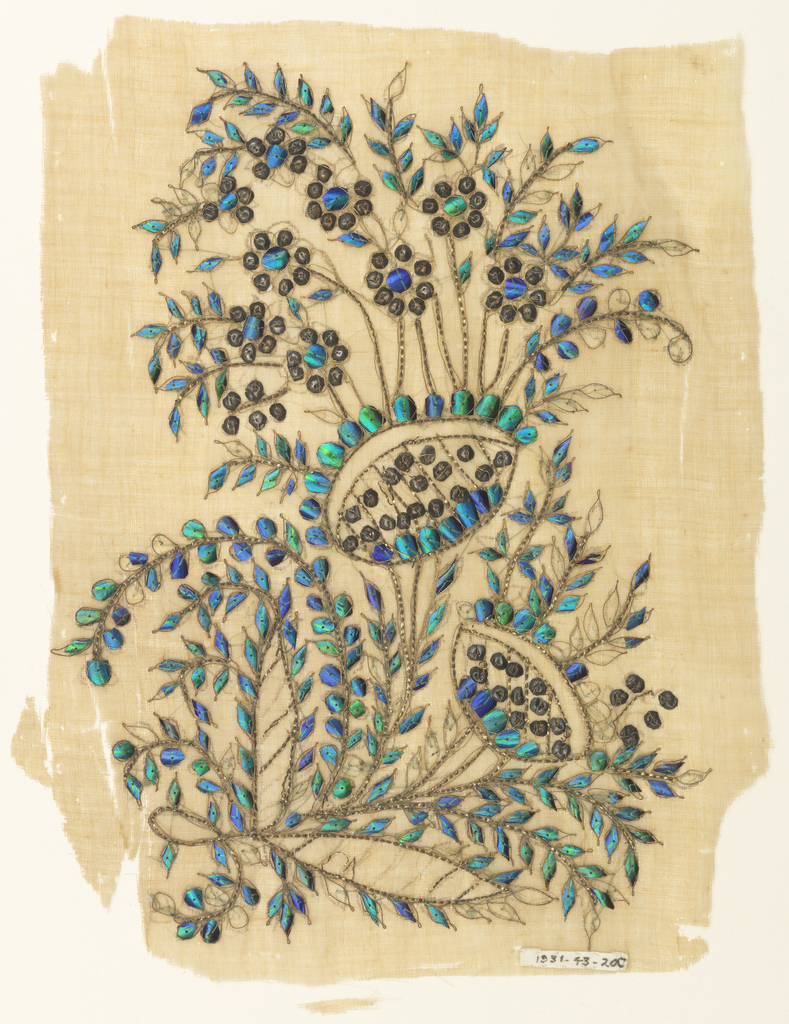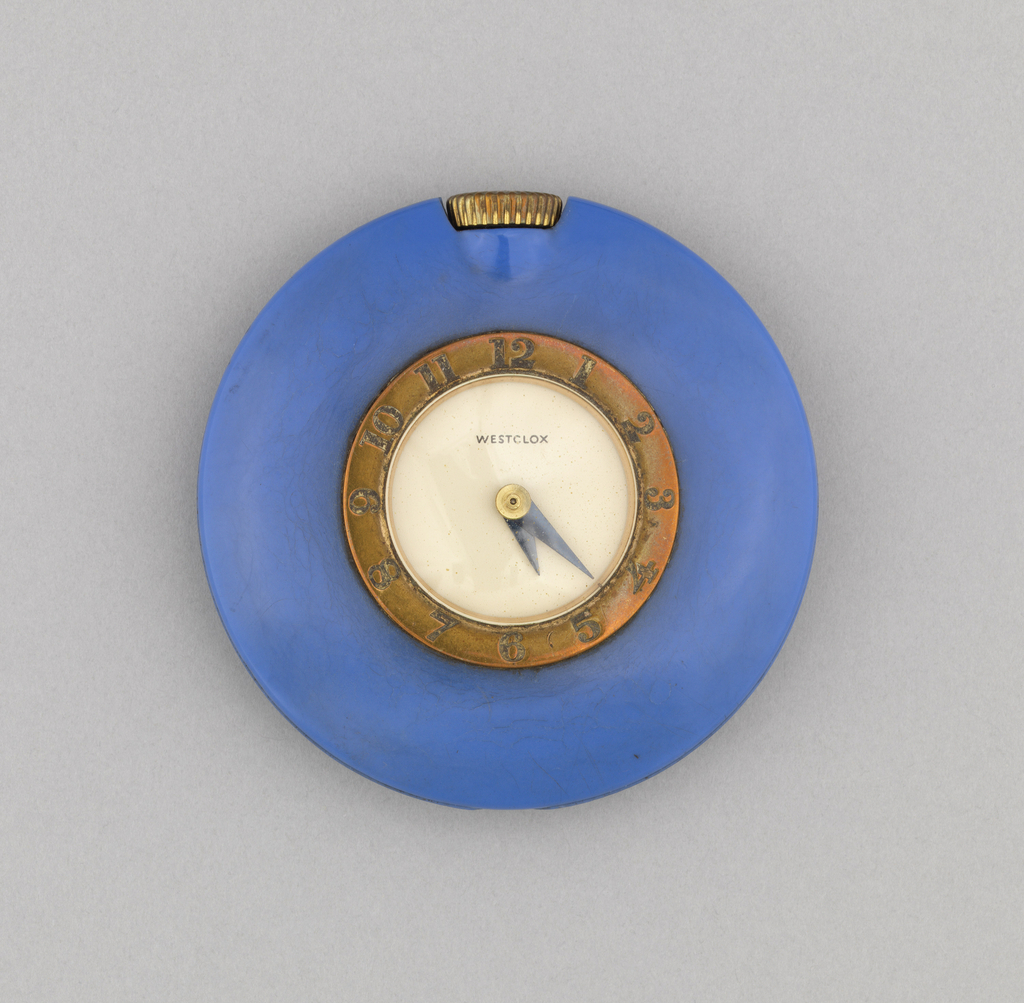Folding fans, or abanicos, were considered must-have accessories in nineteenth century Spain. For women, they served as important tools in courtship, the ‘language of the fan’ expressing everything from ‘come hither’ to ‘don’t bother’ to hopeful admirers. The imagery painted or printed on fans also carried important messages. Many celebrate national events, such as the...
Chinese skirt styles are often called aprons and are typically comprised of two identical sections, each with a decorated panel, a side panel and a pleated or gored panel. They were worn overlapping, wrapped around the body and secured through fabric loops and knotted buttons. The sections were attached to a wide waistband, usually made...
The stomacher was a necessary element of a woman’s daily wardrobe in the eighteenth century. Often elaborately decorated with embroidery, ribbon bows, and metal threads, the triangular shaped accessory covered the open front of the robe à la française. As the fundamental style of dress during this period, these gowns were characterized by their front...
The Qing imperial rulers (1644-1911) were of Manchu ethnicity, and ruled over a mostly Han population. For centuries, Manchu women were required to wear long one-piece robes and Han women two-piece outfits that included a jacket and skirt. Featuring elements of both traditions, this Manchu jacket demonstrates the increasing fusion of these fashions in the...
Some combs are used to groom hair, others to embellish and hold it in place. This decorative lady’s hair comb dates from the nineteenth century. By the 1830s, the austere, classically inspired Empire or Regency fashions of the previous twenty years had been supplanted by exuberant gowns sporting large sleeves and broad skirts. Hairstyles changed...
A carnet de bal, or dance card, was a fashionable accessory often carried by women attending a formal dance to record the names of the gentlemen with whom she would dance over the course of the evening. Occasionally, the carnet de bal would be executed as a fan, allowing a lady to write down her...
The island group occupied by the Kalabari people is located in the Niger River delta. This strategic position brought them into contact with traders and travelers from many African and non-African cultures over a period of centuries. Their dress traditions are marked by an eclectic and cosmopolitan combination of cultural references. [1] Kalabari cut-thread cloth...
From the archives, an Object of the Day post on an example of iridescent design from the collection.
This handbag watch, introduced in 1933 by the Westclox division of the General Time Instruments Corporation, offered the busy modern woman a portable, fashionable and discreet way to manage her time. [1] An alternative to wearing a wristwatch and about the size of a man’s pocket watch, this timepiece was large enough to be easily found...
